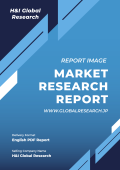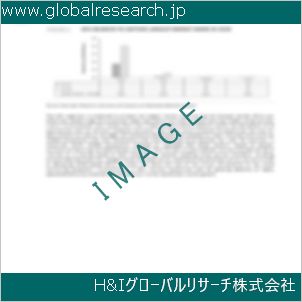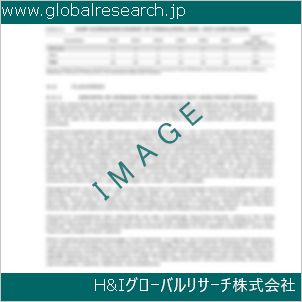1 Wearable Transcutaneous Oxygen Sensors Market Overview
1.1 Product Definition
1.2 Wearable Transcutaneous Oxygen Sensors Segment by Type
1.2.1 Global Wearable Transcutaneous Oxygen Sensors Market Value Growth Rate Analysis by Type 2022 VS 2029
1.2.2 Wound-healing Sensor
1.2.3 Baby Sensor
1.2.4 Other
1.3 Wearable Transcutaneous Oxygen Sensors Segment by Application
1.3.1 Global Wearable Transcutaneous Oxygen Sensors Market Value Growth Rate Analysis by Application: 2022 VS 2029
1.3.2 Hospital
1.3.3 Clinic
1.3.4 Other
1.4 Global Market Growth Prospects
1.4.1 Global Wearable Transcutaneous Oxygen Sensors Production Value Estimates and Forecasts (2018-2029)
1.4.2 Global Wearable Transcutaneous Oxygen Sensors Production Capacity Estimates and Forecasts (2018-2029)
1.4.3 Global Wearable Transcutaneous Oxygen Sensors Production Estimates and Forecasts (2018-2029)
1.4.4 Global Wearable Transcutaneous Oxygen Sensors Market Average Price Estimates and Forecasts (2018-2029)
1.5 Assumptions and Limitations
2 Market Competition by Manufacturers
2.1 Global Wearable Transcutaneous Oxygen Sensors Production Market Share by Manufacturers (2018-2023)
2.2 Global Wearable Transcutaneous Oxygen Sensors Production Value Market Share by Manufacturers (2018-2023)
2.3 Global Key Players of Wearable Transcutaneous Oxygen Sensors, Industry Ranking, 2021 VS 2022 VS 2023
2.4 Global Wearable Transcutaneous Oxygen Sensors Market Share by Company Type (Tier 1, Tier 2 and Tier 3)
2.5 Global Wearable Transcutaneous Oxygen Sensors Average Price by Manufacturers (2018-2023)
2.6 Global Key Manufacturers of Wearable Transcutaneous Oxygen Sensors, Manufacturing Base Distribution and Headquarters
2.7 Global Key Manufacturers of Wearable Transcutaneous Oxygen Sensors, Product Offered and Application
2.8 Global Key Manufacturers of Wearable Transcutaneous Oxygen Sensors, Date of Enter into This Industry
2.9 Wearable Transcutaneous Oxygen Sensors Market Competitive Situation and Trends
2.9.1 Wearable Transcutaneous Oxygen Sensors Market Concentration Rate
2.9.2 Global 5 and 10 Largest Wearable Transcutaneous Oxygen Sensors Players Market Share by Revenue
2.10 Mergers & Acquisitions, Expansion
3 Wearable Transcutaneous Oxygen Sensors Production by Region
3.1 Global Wearable Transcutaneous Oxygen Sensors Production Value Estimates and Forecasts by Region: 2018 VS 2022 VS 2029
3.2 Global Wearable Transcutaneous Oxygen Sensors Production Value by Region (2018-2029)
3.2.1 Global Wearable Transcutaneous Oxygen Sensors Production Value Market Share by Region (2018-2023)
3.2.2 Global Forecasted Production Value of Wearable Transcutaneous Oxygen Sensors by Region (2024-2029)
3.3 Global Wearable Transcutaneous Oxygen Sensors Production Estimates and Forecasts by Region: 2018 VS 2022 VS 2029
3.4 Global Wearable Transcutaneous Oxygen Sensors Production by Region (2018-2029)
3.4.1 Global Wearable Transcutaneous Oxygen Sensors Production Market Share by Region (2018-2023)
3.4.2 Global Forecasted Production of Wearable Transcutaneous Oxygen Sensors by Region (2024-2029)
3.5 Global Wearable Transcutaneous Oxygen Sensors Market Price Analysis by Region (2018-2023)
3.6 Global Wearable Transcutaneous Oxygen Sensors Production and Value, Year-over-Year Growth
3.6.1 North America Wearable Transcutaneous Oxygen Sensors Production Value Estimates and Forecasts (2018-2029)
3.6.2 Europe Wearable Transcutaneous Oxygen Sensors Production Value Estimates and Forecasts (2018-2029)
3.6.3 China Wearable Transcutaneous Oxygen Sensors Production Value Estimates and Forecasts (2018-2029)
3.6.4 Japan Wearable Transcutaneous Oxygen Sensors Production Value Estimates and Forecasts (2018-2029)
3.6.5 South Korea Wearable Transcutaneous Oxygen Sensors Production Value Estimates and Forecasts (2018-2029)
4 Wearable Transcutaneous Oxygen Sensors Consumption by Region
4.1 Global Wearable Transcutaneous Oxygen Sensors Consumption Estimates and Forecasts by Region: 2018 VS 2022 VS 2029
4.2 Global Wearable Transcutaneous Oxygen Sensors Consumption by Region (2018-2029)
4.2.1 Global Wearable Transcutaneous Oxygen Sensors Consumption by Region (2018-2023)
4.2.2 Global Wearable Transcutaneous Oxygen Sensors Forecasted Consumption by Region (2024-2029)
4.3 North America
4.3.1 North America Wearable Transcutaneous Oxygen Sensors Consumption Growth Rate by Country: 2018 VS 2022 VS 2029
4.3.2 North America Wearable Transcutaneous Oxygen Sensors Consumption by Country (2018-2029)
4.3.3 United States
4.3.4 Canada
4.4 Europe
4.4.1 Europe Wearable Transcutaneous Oxygen Sensors Consumption Growth Rate by Country: 2018 VS 2022 VS 2029
4.4.2 Europe Wearable Transcutaneous Oxygen Sensors Consumption by Country (2018-2029)
4.4.3 Germany
4.4.4 France
4.4.5 U.K.
4.4.6 Italy
4.4.7 Russia
4.5 Asia Pacific
4.5.1 Asia Pacific Wearable Transcutaneous Oxygen Sensors Consumption Growth Rate by Region: 2018 VS 2022 VS 2029
4.5.2 Asia Pacific Wearable Transcutaneous Oxygen Sensors Consumption by Region (2018-2029)
4.5.3 China
4.5.4 Japan
4.5.5 South Korea
4.5.6 China Taiwan
4.5.7 Southeast Asia
4.5.8 India
4.6 Latin America, Middle East & Africa
4.6.1 Latin America, Middle East & Africa Wearable Transcutaneous Oxygen Sensors Consumption Growth Rate by Country: 2018 VS 2022 VS 2029
4.6.2 Latin America, Middle East & Africa Wearable Transcutaneous Oxygen Sensors Consumption by Country (2018-2029)
4.6.3 Mexico
4.6.4 Brazil
4.6.5 Turkey
4.6.6 GCC Countries
5 Segment by Type
5.1 Global Wearable Transcutaneous Oxygen Sensors Production by Type (2018-2029)
5.1.1 Global Wearable Transcutaneous Oxygen Sensors Production by Type (2018-2023)
5.1.2 Global Wearable Transcutaneous Oxygen Sensors Production by Type (2024-2029)
5.1.3 Global Wearable Transcutaneous Oxygen Sensors Production Market Share by Type (2018-2029)
5.2 Global Wearable Transcutaneous Oxygen Sensors Production Value by Type (2018-2029)
5.2.1 Global Wearable Transcutaneous Oxygen Sensors Production Value by Type (2018-2023)
5.2.2 Global Wearable Transcutaneous Oxygen Sensors Production Value by Type (2024-2029)
5.2.3 Global Wearable Transcutaneous Oxygen Sensors Production Value Market Share by Type (2018-2029)
5.3 Global Wearable Transcutaneous Oxygen Sensors Price by Type (2018-2029)
6 Segment by Application
6.1 Global Wearable Transcutaneous Oxygen Sensors Production by Application (2018-2029)
6.1.1 Global Wearable Transcutaneous Oxygen Sensors Production by Application (2018-2023)
6.1.2 Global Wearable Transcutaneous Oxygen Sensors Production by Application (2024-2029)
6.1.3 Global Wearable Transcutaneous Oxygen Sensors Production Market Share by Application (2018-2029)
6.2 Global Wearable Transcutaneous Oxygen Sensors Production Value by Application (2018-2029)
6.2.1 Global Wearable Transcutaneous Oxygen Sensors Production Value by Application (2018-2023)
6.2.2 Global Wearable Transcutaneous Oxygen Sensors Production Value by Application (2024-2029)
6.2.3 Global Wearable Transcutaneous Oxygen Sensors Production Value Market Share by Application (2018-2029)
6.3 Global Wearable Transcutaneous Oxygen Sensors Price by Application (2018-2029)
7 Key Companies Profiled
7.1 Radiometer
7.1.1 Radiometer Wearable Transcutaneous Oxygen Sensors Corporation Information
7.1.2 Radiometer Wearable Transcutaneous Oxygen Sensors Product Portfolio
7.1.3 Radiometer Wearable Transcutaneous Oxygen Sensors Production, Value, Price and Gross Margin (2018-2023)
7.1.4 Radiometer Main Business and Markets Served
7.1.5 Radiometer Recent Developments/Updates
7.2 Perimed
7.2.1 Perimed Wearable Transcutaneous Oxygen Sensors Corporation Information
7.2.2 Perimed Wearable Transcutaneous Oxygen Sensors Product Portfolio
7.2.3 Perimed Wearable Transcutaneous Oxygen Sensors Production, Value, Price and Gross Margin (2018-2023)
7.2.4 Perimed Main Business and Markets Served
7.2.5 Perimed Recent Developments/Updates
7.3 Philips
7.3.1 Philips Wearable Transcutaneous Oxygen Sensors Corporation Information
7.3.2 Philips Wearable Transcutaneous Oxygen Sensors Product Portfolio
7.3.3 Philips Wearable Transcutaneous Oxygen Sensors Production, Value, Price and Gross Margin (2018-2023)
7.3.4 Philips Main Business and Markets Served
7.3.5 Philips Recent Developments/Updates
7.4 Sentec
7.4.1 Sentec Wearable Transcutaneous Oxygen Sensors Corporation Information
7.4.2 Sentec Wearable Transcutaneous Oxygen Sensors Product Portfolio
7.4.3 Sentec Wearable Transcutaneous Oxygen Sensors Production, Value, Price and Gross Margin (2018-2023)
7.4.4 Sentec Main Business and Markets Served
7.4.5 Sentec Recent Developments/Updates
7.5 Medicap
7.5.1 Medicap Wearable Transcutaneous Oxygen Sensors Corporation Information
7.5.2 Medicap Wearable Transcutaneous Oxygen Sensors Product Portfolio
7.5.3 Medicap Wearable Transcutaneous Oxygen Sensors Production, Value, Price and Gross Margin (2018-2023)
7.5.4 Medicap Main Business and Markets Served
7.5.5 Medicap Recent Developments/Updates
7.6 Ason Co., Ltd.
7.6.1 Ason Co., Ltd. Wearable Transcutaneous Oxygen Sensors Corporation Information
7.6.2 Ason Co., Ltd. Wearable Transcutaneous Oxygen Sensors Product Portfolio
7.6.3 Ason Co., Ltd. Wearable Transcutaneous Oxygen Sensors Production, Value, Price and Gross Margin (2018-2023)
7.6.4 Ason Co., Ltd. Main Business and Markets Served
7.6.5 Ason Co., Ltd. Recent Developments/Updates
7.7 Novametrix Medical
7.7.1 Novametrix Medical Wearable Transcutaneous Oxygen Sensors Corporation Information
7.7.2 Novametrix Medical Wearable Transcutaneous Oxygen Sensors Product Portfolio
7.7.3 Novametrix Medical Wearable Transcutaneous Oxygen Sensors Production, Value, Price and Gross Margin (2018-2023)
7.7.4 Novametrix Medical Main Business and Markets Served
7.7.5 Novametrix Medical Recent Developments/Updates
8 Industry Chain and Sales Channels Analysis
8.1 Wearable Transcutaneous Oxygen Sensors Industry Chain Analysis
8.2 Wearable Transcutaneous Oxygen Sensors Key Raw Materials
8.2.1 Key Raw Materials
8.2.2 Raw Materials Key Suppliers
8.3 Wearable Transcutaneous Oxygen Sensors Production Mode & Process
8.4 Wearable Transcutaneous Oxygen Sensors Sales and Marketing
8.4.1 Wearable Transcutaneous Oxygen Sensors Sales Channels
8.4.2 Wearable Transcutaneous Oxygen Sensors Distributors
8.5 Wearable Transcutaneous Oxygen Sensors Customers
9 Wearable Transcutaneous Oxygen Sensors Market Dynamics
9.1 Wearable Transcutaneous Oxygen Sensors Industry Trends
9.2 Wearable Transcutaneous Oxygen Sensors Market Drivers
9.3 Wearable Transcutaneous Oxygen Sensors Market Challenges
9.4 Wearable Transcutaneous Oxygen Sensors Market Restraints
10 Research Finding and Conclusion
11 Methodology and Data Source
11.1 Methodology/Research Approach
11.1.1 Research Programs/Design
11.1.2 Market Size Estimation
11.1.3 Market Breakdown and Data Triangulation
11.2 Data Source
11.2.1 Secondary Sources
11.2.2 Primary Sources
11.3 Author List
11.4 Disclaimer
| ※参考情報 ウェアラブル経皮酸素センサーは、身体に装着することで血中酸素濃度を非侵襲的に測定する機器です。これらのセンサーは、特に健康管理や医療の分野で重要な役割を果たしており、近年ではテクノロジーの進歩により、さまざまな用途が広がっています。本稿では、ウェアラブル経皮酸素センサーの概念、特徴、種類、用途、関連技術などについて詳しく説明いたします。 ウェアラブル経皮酸素センサーは、皮膚の下の血管を通過する血液中の酸素レベルを測定することを目的としたデバイスです。従来の酸素測定方法は、血液サンプルを取り分析する侵襲的な方法が多く、痛みやリスクを伴いますが、ウェアラブルデバイスは皮膚を介して測定を行うため、より安全で快適な体験を提供します。経皮的な測定技術は、たとえば、赤外線や紫外線の光を使用して、皮膚の下にある血液の酸素飽和度を推定することで機能します。 特徴としては、まず非侵襲的であることが挙げられます。これにより、ユーザーは痛みを伴うことなく、日常生活の中で手軽に測定を行うことができます。また、リアルタイムにデータを取得できるため、健康状態のモニタリングが簡便に行えます。さらに、多くのウェアラブル経皮酸素センサーはBluetoothなどの無線通信機能を備えており、スマートフォンやタブレットと連携してデータを記録・分析することが可能です。このため、長期的な健康管理が容易になります。 ウェアラブル経皮酸素センサーには、いくつかの種類があります。一つは、フィンガータイプのセンサーです。これは指先に装着するもので、主に家庭での使用や一時的なモニタリング用として広く普及しています。また、腕や足首に装着できるブレスレットタイプやバンドタイプの製品もあり、これらはスポーツやフィットネス監視に特化した機能が付加されています。最近では、衣服に組み込まれたウェアラブルセンサーも登場しており、より広範なデータを収集することが可能です。 用途としては、主に健康管理や医療分野での活用が考えられます。たとえば、慢性的な呼吸器疾患を持つ患者さんにとって、経皮酸素センサーは重要なモニタリングツールとなります。患者さんは日常生活の中で自分の酸素レベルを常に知ることができ、それに基づいて必要な対策を講じることができます。また、スポーツ選手やフィットネス愛好者にとっても、トレーニングの効果を測定するためのツールとして重宝されており、特に高地トレーニングや過酷なトレーニングを行う際には、体の酸素状態を知ることがパフォーマンス向上に寄与することが多いです。 関連技術には、生体信号の分析技術やデータ解析技術が含まれます。ウェアラブル経皮酸素センサーから取得したデータは、生理学的な状態を知るために非常に重要であり、これを基にアルゴリズムやAI技術を用いてより詳細な健康評価を行うことが可能です。例えば、機械学習を活用して、ユーザーの健康状態や生活習慣に基づいたアドバイスを提供するアプリケーションが開発されています。 さらに、ウェアラブル経皮酸素センサーは、今後ますます進化していくと期待されています。新しい素材やデザインの開発により、さらに軽量化やコンパクト化が進むことで、使いやすさが向上するでしょう。また、リアルタイムでのデータ通信や分析がさらに進化し、医療機関と直接連携することで、より迅速な対応が可能になるなどの利点も考えられます。 現在のウェアラブル経皮酸素センサーは、個々のユーザーや医療従事者にとって貴重なツールとなっています。実際、特定の健康問題を抱える方や高リスクな環境で働く方々にとって、このテクノロジーは命を救う可能性すら秘めています。技術革新により、今後もさまざまな形で進化していくことが期待されており、ユーザーの健康管理や医療における新たな可能性を切り開く存在であり続けるでしょう。 結論として、ウェアラブル経皮酸素センサーは、非侵襲的かつリアルタイムで酸素濃度を測定するための革新技術です。健康管理からスポーツパフォーマンスの向上に至るまで、さまざまな分野での応用が期待されるこのテクノロジーは、今後の医療と福祉の発展に寄与する重要な要素となるでしょう。より多くの人々がこの技術の恩恵を享受できるようになれば、私たちの生活は大きく変わる可能性があります。 |
❖ 免責事項 ❖
http://www.globalresearch.jp/disclaimer












